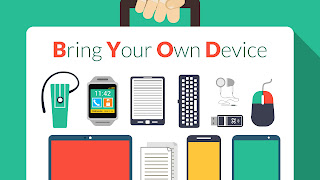Twitter Feed
SOA is Dead; Long Live Services
Blogger: Anne Thomas ManesObituary: SOA“SOA met its demise on January 1, 2009, when it was wiped out by the catastrophic impact of the economic recession. SOA is survived by its…
2009 – The Year of Cloud Computing!
Yes, everyone is making this bold statement. In his article, David Fredh laid out the reasons quite well: The technological hype has started already but the commercial breakthrough will come…
Salesforce.com and Google expand their alliance
In a Jan. 3rd announcement, Salesforce.com announced an expansion of its global strategic alliance with Google. In announcing the availability of Force.com for Google App Engine™, the team has connected…
December NCOIC Plenary Presentations
Presentations from the NCOIC Cloud Computing sessions held earlier this month have been posted on-line in the Federal Cloud Computing wiki. The event featured speakers from IBM, Cisco, Microsoft, HP,…
Booz|Allen|Hamilton Launches “Government Cloud Computing Community”
As a follow-up to a Washington, DC Executive Summit event, BoozAllenHamilton recently launched an on-line government cloud computing collaboration environment. In an effort to expand the current dialog around government…
Is Google Losing Document?
John Dvorak posted this question on his blog Saturday and as of Sunday evening had 52 responses! This is not a good thing for building confidence in cloud computing. Or…
Cryptographic Data Splitting? What’s that?
Cryptographic data splitting is a new approach to securing information. This process encrypts data and then uses random or deterministic distribution to multiple shares. this distribution can also include fault…
NPR “All Things Considered” considers Government Cloud Computing
My personal thanks to Andrea Seabrook, Petra Mayer and National Public Radio for their report “Will ‘Cloud Computing’ Work In White House?” on today’s “All Things Considered”. When I started this blog…
HP Brings EDS Division into it’s cloud plans
The Street reported earlier this week that Hewlett Packard’s EDS division has won a $111 million contract with the Department of Defense (DoD) that could eventually support the U.S. military’s…
- Increased employee mobility (63%), satisfaction (56%) and productivity (55%) dominate as the top drivers of BYOD. These employee related drivers are considered more important than reduced costs (47%).
- Security (39%) and employee privacy (12%) are the biggest inhibitors of BYOD adoption.
- 20% of surveyed organizations have suffered a mobile security breach, primarily driven by malware and malicious WiFi.
- Security threats to BYOD impose heavy burdens on organizations’ IT resources (35%) and help desk workloads (27%).
- Despite increasing mobile security threats, data breaches and new regulations, only 30% of organizations are increasing security budgets for BYOD in the next 12 months and 37% have no plans to change their security budgets.
- 72% – Data leakage/loss
- 56% – Unauthorized access to company data and systems
- 54% – Downloading of unsafe apps or content
- 52% – Malware
- 50% – Lost or stolen devices
- 49% – Vulnerability exploitation
- 48% – Lack of control on endpoint security
- 39% – Infrequent software updates
- 38% – Compliance
1. Create your policy before procuring technology: To effectively use mobile device management (MDM) technology for employee owned devices Policy must precede technology. Also note that these policies will have broad corporate-wide implications for IT, HR, legal, and security.
- Mobile device management
- Application security assessments
- Application testing services
- Application source code security assessments; and
- Embedded device security.
This post was brought to you by IBM Global Technology Services. For more content like this, visit ITBizAdvisor.com.
( Thank you. If you enjoyed this article, get free updates by email or RSS – © Copyright Kevin L. Jackson 2017)
Cloud Computing
- CPUcoin Expands CPU/GPU Power Sharing with Cudo Ventures Enterprise Network Partnership
- CPUcoin Expands CPU/GPU Power Sharing with Cudo Ventures Enterprise Network Partnership
- Route1 Announces Q2 2019 Financial Results
- CPUcoin Expands CPU/GPU Power Sharing with Cudo Ventures Enterprise Network Partnership
- ChannelAdvisor to Present at the D.A. Davidson 18th Annual Technology Conference
Cybersecurity
- Route1 Announces Q2 2019 Financial Results
- FIRST US BANCSHARES, INC. DECLARES CASH DIVIDEND
- Business Continuity Management Planning Solution Market is Expected to Grow ~ US$ 1.6 Bn by the end of 2029 - PMR
- Atos delivers Quantum-Learning-as-a-Service to Xofia to enable artificial intelligence solutions
- New Ares IoT Botnet discovered on Android OS based Set-Top Boxes


